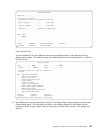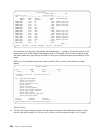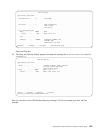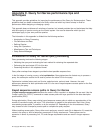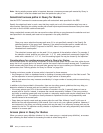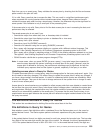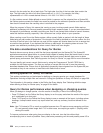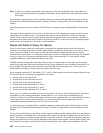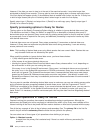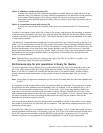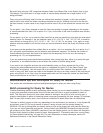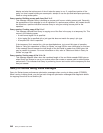retrieve the text for each field. Also, showing the text for each field results in fewer fields being shown on
each display so you have to page through more displays to retrieve the fields you need to view. This is
also true for query, file, member, and format lists.
Define result fields in Query for iSeries
Labeled durations are added or subtracted in left to right order. This could make a difference in your
results. For example, adding 1 MONTH+1DAYcould give a completely different result than adding 1 DAY +
1 MONTH Jan28+1DAY+1MONTH gives -> Jan 29 then Feb 28. Jan 28 + 1 MONTH+1DAYgives->
Feb 28 then Mar 1.
Define numeric result fields with odd lengths instead of even lengths to reduce system processing unit
time when using these fields. See “File definitions and data in Query for iSeries” on page 233 for details.
Avoid defining a result field using division by zero. Although the system processes the query with this
present, each divide by zero operation causes error handling by the system that is expensive in terms of
processing unit and overall response time.
Avoid defining a result field that causes an overflow condition. Overflow occurs when a field is larger than
its specified length. When overflow occurs, Query shows these result fields with the ‘+’ character on the
report.
Avoid defining variable-length character fields. Use numeric constants for the offset and length of a
SUBSTR function.
Select and sequence fields in Query for iSeries
This option allows you to control which fields appear in a report and where they appear within a report
record. To prevent unnecessary disk I/O by Query, select only the fields you need. Also, additional
unneeded fields make a report less readable. If you want to use most of the fields, use F21 (Select All) to
show all fields, then delete the sequence numbers from the fields you do not need.
Note: If you select no fields, Query for iSeries (as a default) picks up to the first 500 fields in the file.
Avoid this type of operation because it causes unnecessary disk I/O.
Avoid using variable-length fields and null-capable fields. Both of these attributes require extra processing.
Select records in Query for iSeries
Specify record selection tests using fields that match key fields of existing access paths or to create
access paths that match often-used record selection tests. Query attempts to use an existing access path
if at least some of the record selection tests match the first key field of that access path.
For example, assume there is a file X with fields A, B, C, and D. An access path exists over this file using
the key fields A, B, and D, in that order. For any query with record values using field A, Query considers
using this access path. However, if the record selection does not involve field A, the access path is not
used. For instance, if the record test is AEQ3, the access path can be used. If the query contains record
selection tests involving only fields B or D (for example, BEQ5orDEQ8), this access path cannot be
used.
Performance improves if more of the selection tests match more key fields in the same access path. This
allows the access path to reduce the number of records selected. As an example (using file X again), if the
record tests are AEQ3ANDBEQ5ANDDGT8,the access path can be used to find records matching all
three of these values.
Appendix C. Query for iSeries performance tips and techniques 235



